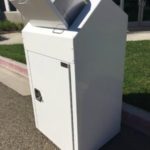
Despite the impact that electronics have on our every day life, many people are unaware of the impact that e-waste has on our environment. To get a better idea of the effects of e-waste as well as how you can help to control it, it is beneficial to learn more about what it is and how to collect it.
Understanding E-Waste
E-waste is the informal name given to electronic products that are no longer considered to be useful, either because they are outdated or are no longer properly functioning. This includes items such as VCRs, televisions, stereos, computers, cell phones, fax machines, PDAs and copiers. While the Electronic Waste Recycling Act of 2003 was passed in an effort to assist with the recovery and recycling of such items, no clear definition of “e-waste” currently exists. For example, whether or not items such as microwaves and other similar appliances should be grouped into the e-waste category has not been established through regulations.
The Hazards of E-Waste
Since certain components of some electronic products contain hazardous materials, some e-waste products can be viewed as hazardous waste. In California, for example, nonfunctioning cathode ray tubes from televisions and monitors are considered to be hazardous. Some of harmful materials that can be found in these electronic products include cadmium, beryllium, lead and mercury. While these materials might be found in trace elements, they create a significant threat to the environment when added up in volume.
Disposing of E-Waste
E-waste can be disposed of in a few different ways. For example, equipment that is still functioning can be donated or sold to someone who might be able to use it. If it is damaged, but can still be repaired, the item can also be refurbished for additional use. For those items that cannot be repaired, another option is to recycle the product. In addition to reducing the environmental impact from the trace elements found in these products, failure to recycle these items also results in failure to recycle the glass, plastic and metals found in these items.
Unfortunately, despite having the option to recycle or reuse, many of these electronic devices are still finding their way into landfills. In fact, the Environmental Protection Agency estimates that as much as 60 million metric tons of electronic waste is tossed into landfills every year. One step toward eliminating this waste is to educate the public about the need for collecting e-waste while also making the collection process simple and convenient. With the help of e-waste collection bins, the amount of waste collected can be significantly increased.
 At Securr, we are pleased to offer an Indoor E-Waste Collection Bin to help meet this need. Our ADA compliant e-waste collection bin is made from heavy duty, corrosion-resistant galannealed steel. As such, it looks attractive while also offering durability. With its chute-type loading door, contents can be easily dropped inside while remaining securely in place until the door is unlocked. The enclosure boasts a 40 gallon capacity, making it possible to collect cell phones, modems, computers, printers, batteries and other similar items.
At Securr, we are pleased to offer an Indoor E-Waste Collection Bin to help meet this need. Our ADA compliant e-waste collection bin is made from heavy duty, corrosion-resistant galannealed steel. As such, it looks attractive while also offering durability. With its chute-type loading door, contents can be easily dropped inside while remaining securely in place until the door is unlocked. The enclosure boasts a 40 gallon capacity, making it possible to collect cell phones, modems, computers, printers, batteries and other similar items.